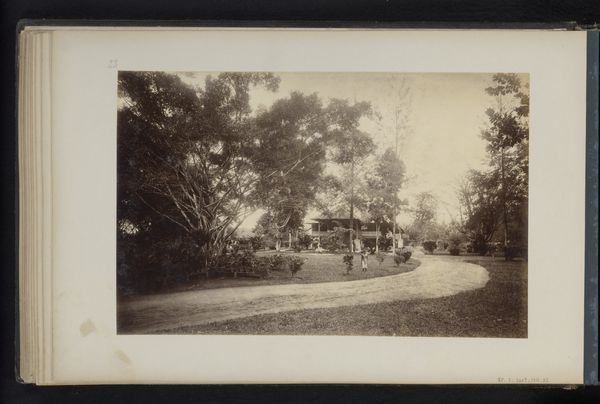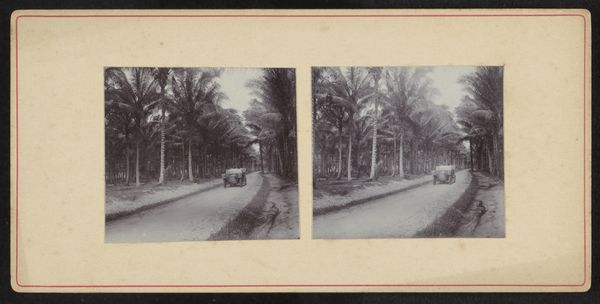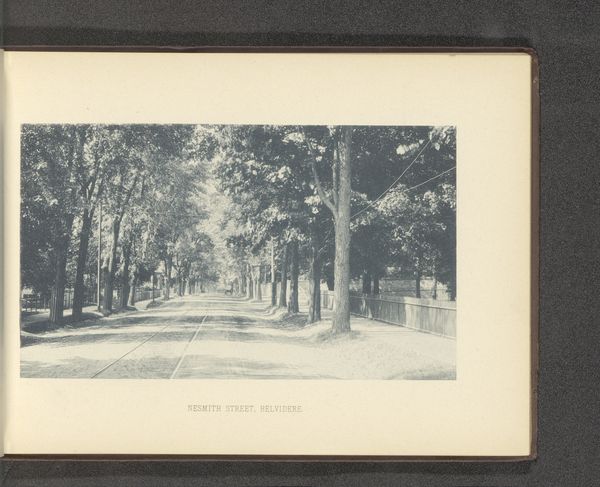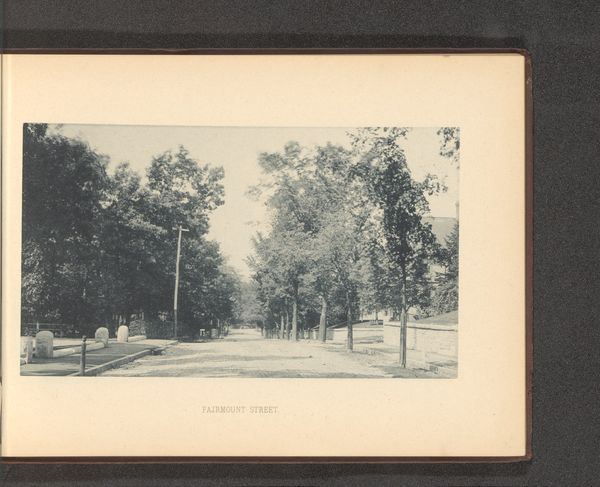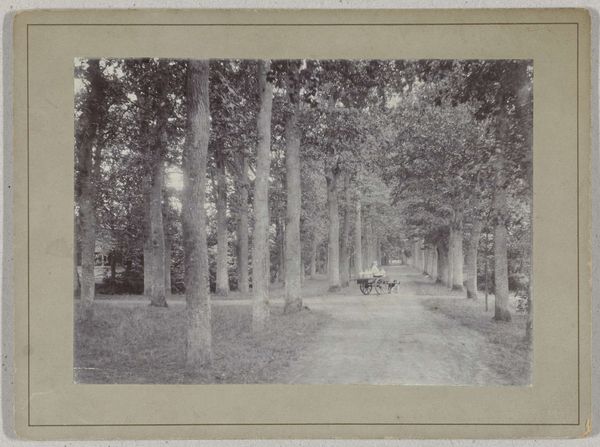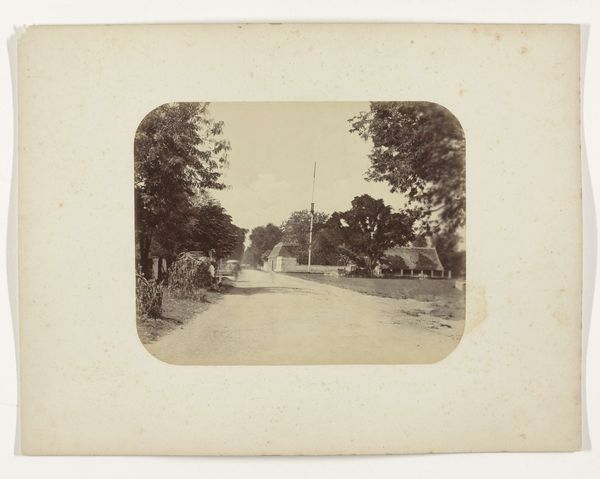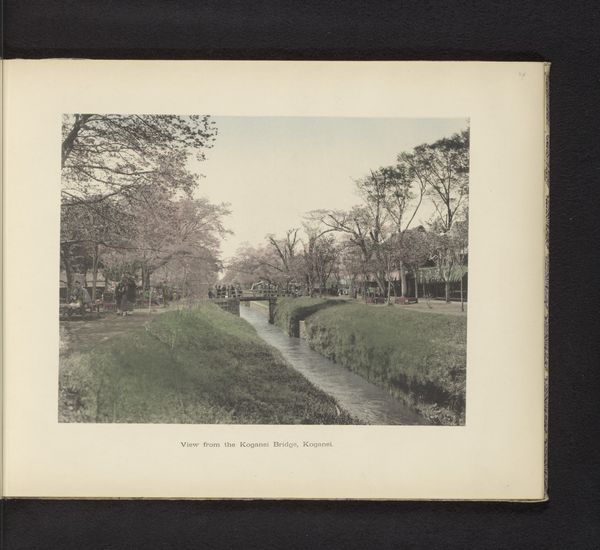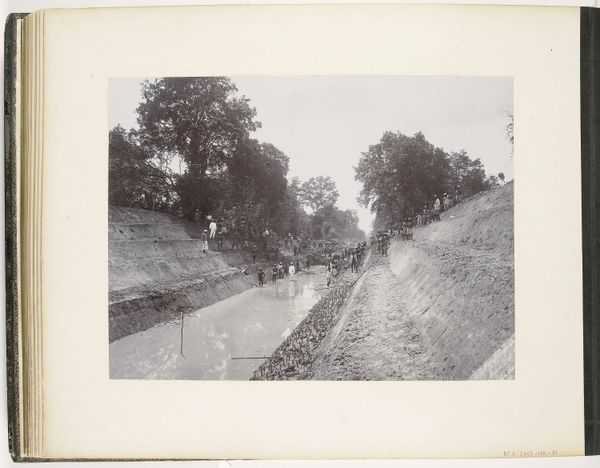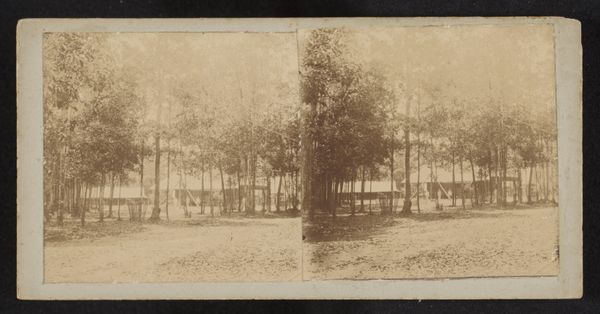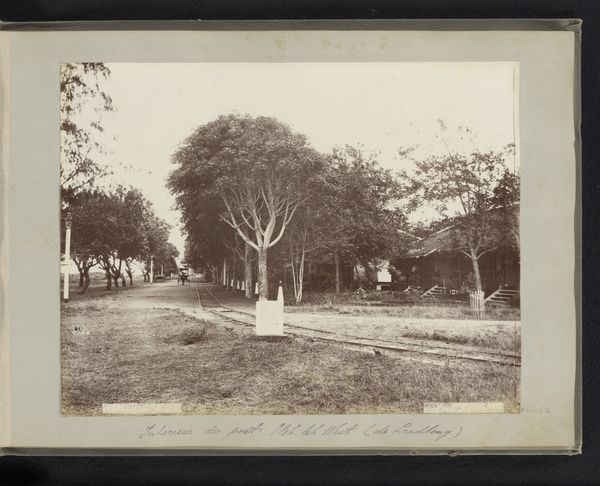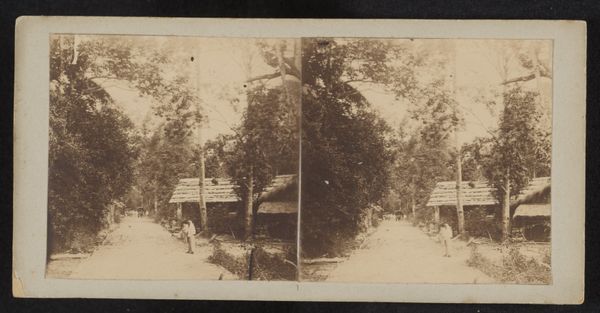
Dimensions: height 265 mm, width 355 mm
Copyright: Rijks Museum: Open Domain
Curator: Standing before us is an albumen print entitled "Laan met cemara bomen in Tandjong Poera, Sumatra," taken circa 1890-1900, attributed to Heinrich Ernst & Co. The location depicted is Tandjong Poera in Sumatra, and this print is currently held at the Rijksmuseum. Editor: Immediately, I'm struck by the image’s stillness, a long road receding into the distance, flanked by rows of trees. There's a certain emptiness and quietude about it. It is a beautiful, carefully framed scene. Curator: The photograph presents a meticulously planned landscape. What you feel, and what I believe the photographers intended, showcases a visual assertion of colonial order. Note how the road cuts straight through the landscape, literally dividing the "natural" world, symbolizing the imposition of Western infrastructure and control. Editor: That's a crucial point. And looking at the light, diffused and almost dreamlike, coupled with the albumen print’s sepia tones, there's also a romanticising or idealizing effect. It is an orientalist gaze transforming a real place into an exotic image. Curator: Precisely. The composition directs our gaze along this constructed avenue, reinforcing a European perspective and control over the environment. How might local Sumatran communities have perceived this controlled reshaping of their environment, the conversion of diverse ecosystems into manageable spaces, and whether those voices were, at the time, heard at all, needs to be considered. Editor: I can’t help but wonder about the figures in the distance. Barely visible, they feel symbolic. It begs the question: how do ordinary people inhabit or navigate spaces designed under colonial agendas? Curator: These are exactly the types of questions this work evokes, underscoring how photography from this era not only documented but actively shaped perceptions of colonial spaces and the power dynamics that permeated them. Editor: I see it as a compelling, if unsettling, portrayal of human interaction within a colonial setting, reminding us of the biases inherent in visual records and what stories the framing might deliberately obscure.
Comments
No comments
Be the first to comment and join the conversation on the ultimate creative platform.
